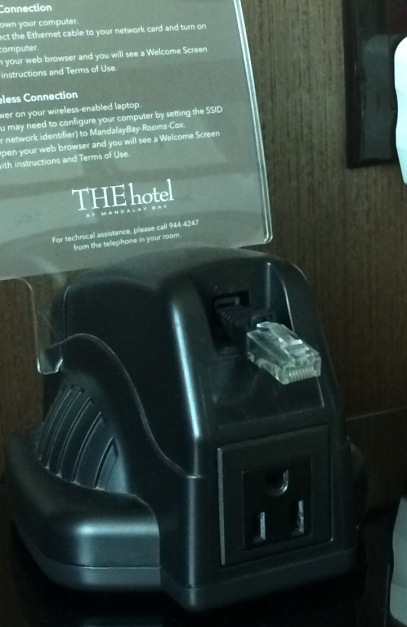Here’s the Executive Summary: Dollars. Quid. Clams. Smackers. Greenbacks.
Sure, some WLAN vendors and their Integrator buddies stand to make big dough from putting Wi-Fi in stadiums. But if you think that’s the end of the story, you might want to give the matter another think. A BIG ol’ think. There’s a LOT of money going a LOT of places in this equation.
I have written about stadium wireless once or twice in my Network Computing blog, but it was the recent announcement about Extreme Networks scoring the NFL Wi-Fi Analytics gig that got me thinking more on the topic. But my ponderings didn’t stop with the NFL. No sir, the powerful cranium that sits a mere inches above my handsomely chiseled jaw also went to town thinking about Major League Baseball, the NBA, the NHL, Japanese baseball, the NCAA, minor league baseball, and even strayed into the realms of soccer and rugby.
Being all about value, I partnered with Google’s finest search engine to come up with a bunch of numbers. And they are impressive.
Riddle me this: How many professional-level stadiums are out there in the world of sports? What about college? And the minors?
The answer of course is “a boatload”.
And let’s talk about how big that boat is. Here are the number of teams for each sport, at the identified level:
- NFL Football: 32 teams
- NCAA Football: 245 teams (with at least 100 stadiums)
- Major League Baseball: 30 teams
- Minor League Baseball: 240 teams (at different levels in 6 countries)
- NBA Basketball: 30 teams
- NCAA DIvision 1 Basketball: 345 teams
- NHL Hockey: 30 teams
- Nippon Professional Baseball (Japan): 12 teams
- International Professional Soccer: 200+ teams
And the list goes on with other sports venues, convention centers, etc- but you probably are starting to get the point. Now let’s play the “What If” game from the above data set.
Of the over 1,100 teams specified above, let’s say that 400 of them had a stadium or arena that has, or will get, decent Wi-Fi. We know that some venues like Cowboys Stadium (now called AT&T stadium) have far higher than 500 access points (Cisco in this case), while facilities like Packers’ Stadium (Lambeau Field) have a small quantity of APs (Aerohive for the Cheeseheads) that cover select administrative areas only. We also see that Ruckus soccer stadium deployments in Brazil feature a few hundred APs per. So for the sake of conversation, we’ll say each of our 400 example venues will get a conservative 250 access points each. That’s a total of 100,000 access points (anyone familiar with topical reality would probably agree that I’m being very conservative with this exercise).
Let’s keep going… behind those 100,000 access points we have:
- Spare APs
- Controllers
- Countless server types
- Licensing
- Maintenance agreements
- Specialized antennas
- Cabling
- Pathway
- Switches
- UPS
- Routers
- New MTRs and ITRs
- ISP connections
- NOC operations
- App developers
- Security appliances
- Analytics services
- Upgrades
- Jobs- both short term and long
- New cultures
- Marketing
- Infinite “one thing enables another” opportunities
I don’t know about you, but I smell money. Let’s get even more bold, and say that each one of those 400 stadiums with 250 access points had a simple installation cost breakdown like this:
250 APs x $5,000 each (that includes cabling, pathway, controllers, switches- everything) = $1.25 Million per facility.
Multiply that by 400 stadiums, and we’re looking at a theoretical $50 Million cost, just to equip the 400 example venues with theoretical Wi-Fi. (And again- my numbers are BS, very conservative versus likely real costs and actual aggregate AP counts.) Then there are the costs of running the network, monitizing it (it takes money to make money), and evolving it based on the findings of lots and lots of analytics that are being counted on to return quick ROI on the technology investment. Along the way, a number of decent jobs have been created (or will be when people who have no clue what they are doing with big WLAN’s hire help). This is a big story with a lot of chapters.
I’m greatly oversimplifying something that is huge here- and I want it to be perfectly clear that my analysis is simple conversation fodder to make the point. And that point is- there’s a lot of money involved with in stadium Wi-Fi. So much so, that many WLAN vendors have special programs just for stadium WLAN. For example (this is in no way a complete list):
Cisco Connected Stadium
Aruba Networks Large Public Venues
Xirrus Stadium Wireless
Meru Sports and Entertainment Solutions
Extreme Networks Sports and Entertainment
Ruckus High Density Solutions
Even Ubiquiti Is In On It
(I’ll be talking with Extreme, Xirrus, and Aruba at Wireless Field Day 6)

